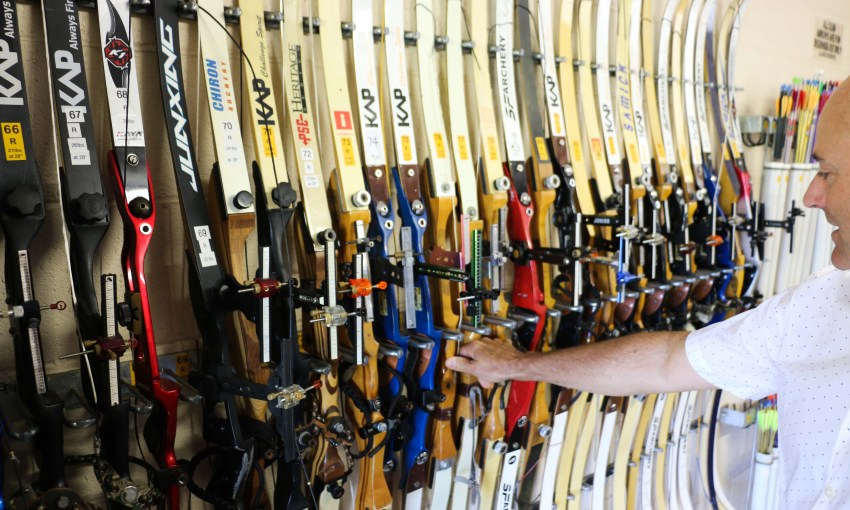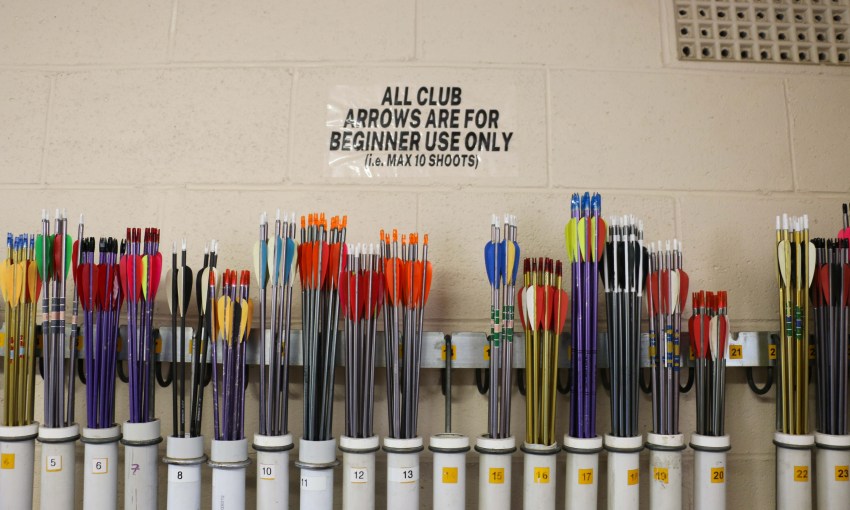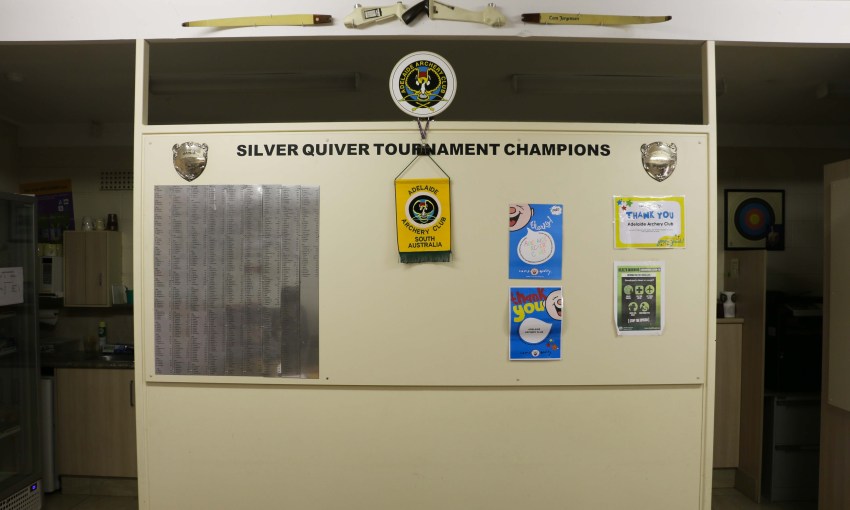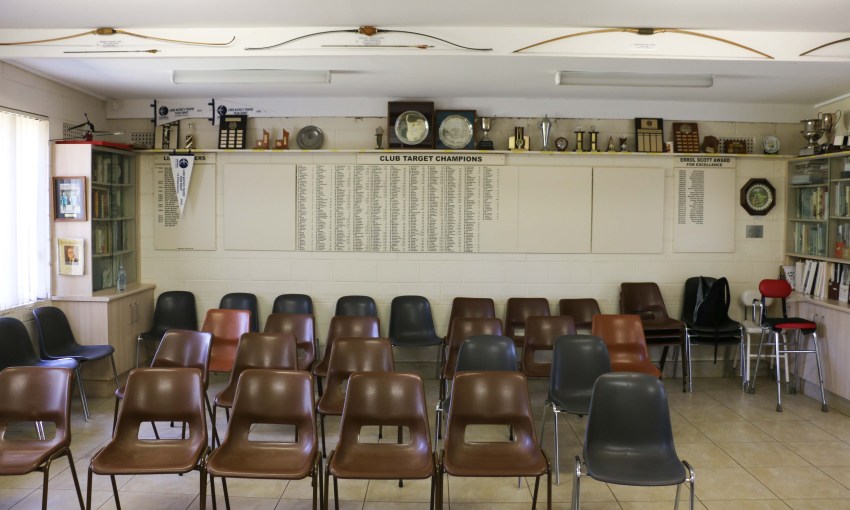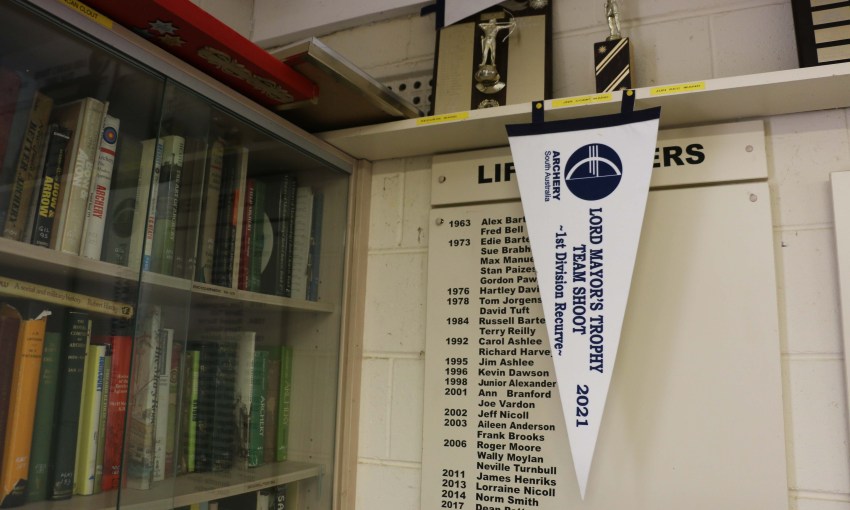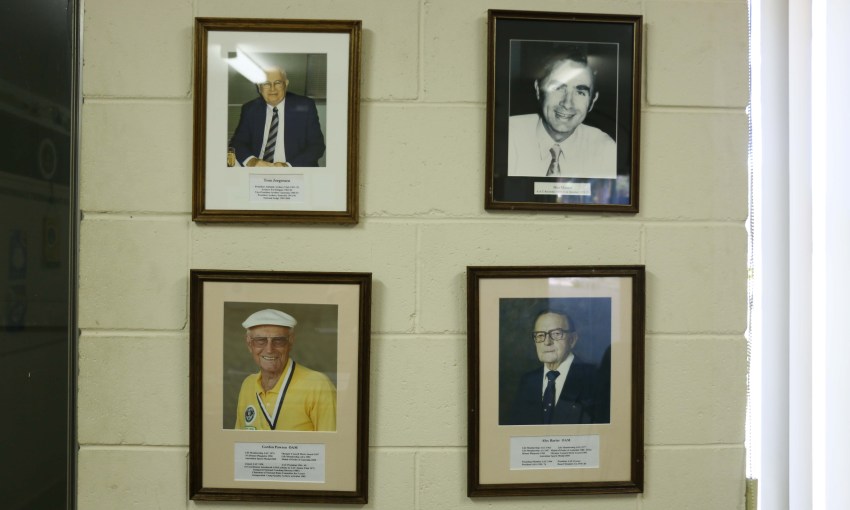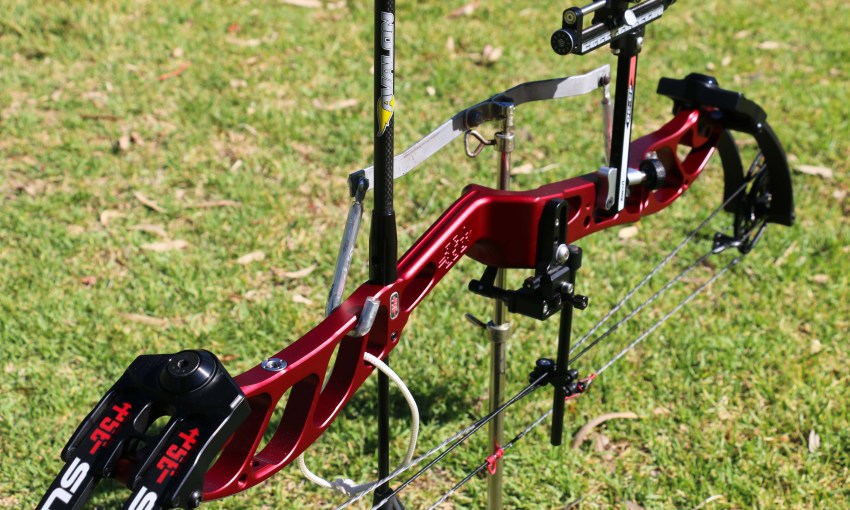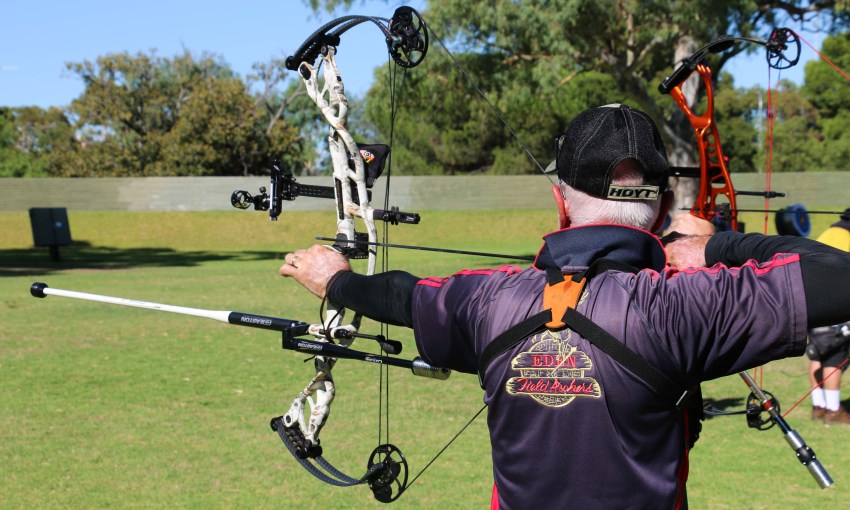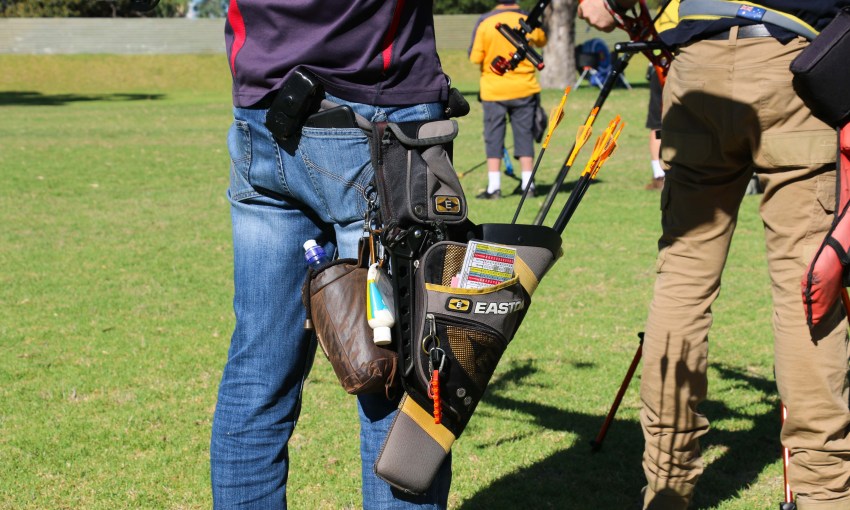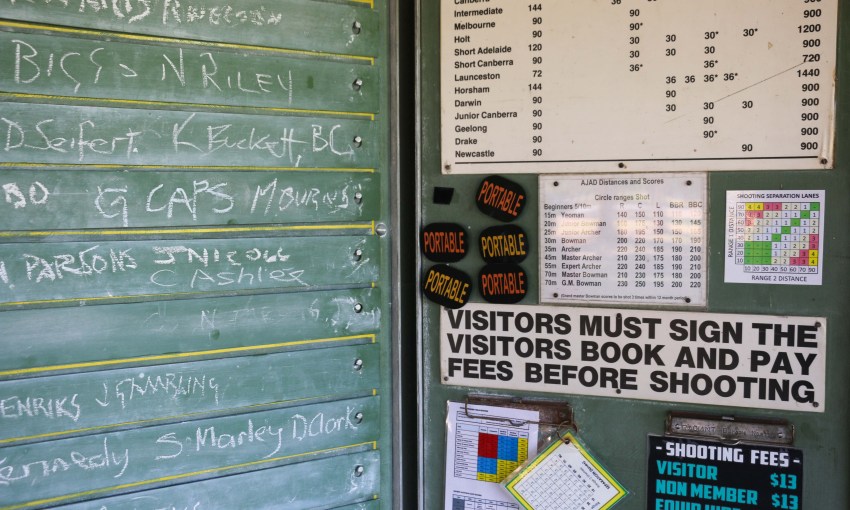Three times a week, Adelaide Archery Club's grassy knoll in the Park Lands becomes a flurry of bows and arrows. With the aid of council and state grants, the 173-year-old club hopes to soon upgrade its ageing clubrooms to meet demand and broaden its inclusivity.
Inside archery’s expanding long-range appeal
Standing at a safe distance, CityMag watches as an archer draws back a silver carbon arrow, steadies, and then releases it with a fzzzow.
The projectile sails through the air, travelling 10 metres across Park 10 in the northeastern Park Lands before sinking into a bullseye target.
The archer is one of a few dozen members of the Adelaide Archery Club present on the morning we visit, each dressed uniformly in green and yellow.
A horn sounds to signify the end of their four-minute round, each having dispensed six arrows. The group then leave behind their weapons, which span traditional wooden longbows to technical metal compound bows, and walk towards their targets, which now resemble pin cushions.
The only enemy of this genial militia is inaccuracy.

An archer with a compound bow
Daniel Caon is president of the 173-year-old Adelaide Archery Club, a 280-member strong organisation that has been headquartered in Park 10 for 70 years. The 30 or so people here this morning — mostly retirees — will spend the next three hours sharpening their skills.
“Colonel William Light introduced archery to South Australia… because [back then] archery was a military pursuit,” Daniel says of the club’s history.
“It was also used as a sport 50 or 80 years ago and was introduced to the Olympics a long time ago. Now archery is one of two or three sports we consider a permanent part of the Olympics, with athletics and swimming.”
Adelaide Archery Club’s headquarters is a half-century-old brick building located near the archery field. It’s a modest structure, with a dated clubroom, bathroom and small storeroom, and is slated for a much-needed facelift.
The Adelaide City Council recently approved a $100,000 grant for Adelaide Archery Club, which will fund an extension onto the back of the building. In addition to extra storage space, the extension will include disability-compliant toilets.
This is particularly important for the club, which runs an inclusive archery program for people with disability. Graham Wilson, who heads up the program, says one of the club’s members who uses a wheelchair can’t use the bathrooms as the doorway is too narrow for his chair. Instead, the archer has to cross the road and use a toilet block abutting a Prince Alfred College sports pitch.
Currently though, that back-up toilet is broken. Graham has notified the Adelaide City Council about this issue, but at the time we spoke he was yet to receive a response. (They also did not address this when CityMag asked direct questions regarding the toilets.)
Alongside the Adelaide City Council funding, Adelaide Archery Club has also applied for a grant from the State Government to help get the project underway. The total cost of the extension is $400,000.
Having received council funding already will help, but Daniel says the group has not previously been successful in lobbying the government for money. They’ll find out in March if they’ve won the bid. If they do, construction is expected to start in June and wrap up at the end of the year.

Adelaide Archery Club HQ
In addition to disability compliance, the club needs the extension to meet the sport’s growing popularity. Daniel says membership has double over the last four years.
Archery often gets a surge in interest when it’s portrayed to popular culture. Both Braveheart and Hunger Games led to a “blip” in sign-ups, Daniel says. The Olympics also has a similar effect.
But the sport has its own natural appeal, particularly for older people and those with disability.
—Daniel Caon
Graham says archery is a naturally inclusive sport, as most athletes hit their straps anywhere between the ages of 28—40. It’s also non-contact and can be tailored to people living with disability.
Adelaide Archery Club’s inclusive archery program, which Graham has run since October, caters to people living with a disability, as well as army, police and emergency service veterans. He hopes to get members of the club to the Paralympics, which he’s optimistic will happen.
Graham has an arrow-shaped gold stud in his earlobe which has travelled with him all around the world, including a trip with the Australian Paralympic team to Tokyo and five world championships in other cities.
“If you look at gymnastics… if you haven’t made it to A-level by the age of 16, you’re out. Swimmers, by the age of 25, they’re out,” he says. “Archers — the guy that lost to Simon Fairweather in the Olympics is 50 years of age; he was an Olympic finalist.”

L—R: Jean-Michel Favre, Daniel Caon and Graham Wilson
We’re joined at the clubroom by French-born, Adelaide-based Jean-Michel Favre, who has been an Adelaide Archery Club member on and off since 2007. An engineer by day, Jean-Michel moonlights as a Paralympic athlete and has travelled to Seoul, Barcelona, Madrid and Atlanta to compete. He, too, believes the sport is inherently inclusive.
“This is one of the sports where, while you are disabled, you can be on the line and do the same thing as everybody else,” he explains. “You compete with yourself in archery, but obviously, there’s also another context: the other people. The first fight is with yourself trying to get better and manage your nerves.”
Club president Daniel has been an archer for 11 years and also works professionally as an engineer. Much like Jean-Michel, he’s attracted to the notion of self-improvement in the sport. In the storeroom, he shows us rows of multicoloured bows. Some look like Lord of the Rings props, while others seem to have been pulled from the set of Transformers.
“There is something therapeutic about archery, but it’s also a little bit addictive,” Daniel says. He picks up a light, blue bow for CityMag to hold – a beginner bow, he says. As archers progress, they’ll eventually wield heavier ones, some made from fibreglass or wood.
“I like that you can participate on your own and set your own goals, or depend on a team of people,” Daniel says. “As you are trying to get a higher score you want to get better and better, and humans just like to do things like that.”

Bullseye
Daniel says the club also accommodates school students. This is another element of the club’s inclusivity. Adelaide Archery Club accepts anyone over the age of nine — the age humans are best at taking instruction, Daniel says, laughing.
“Wednesday afternoons in term one or term four, when we have nice weather, we have a group of 30 kids coming from Pulteney Grammar,” he says.
“They offered archery as an alternative sport because not all kids want to play netball and football or cricket, and it’s still a challenging sport and it offered them another choice. That meant the kids that wouldn’t have done a sport now can.”

A trucker cap and a compound bow is a big look



